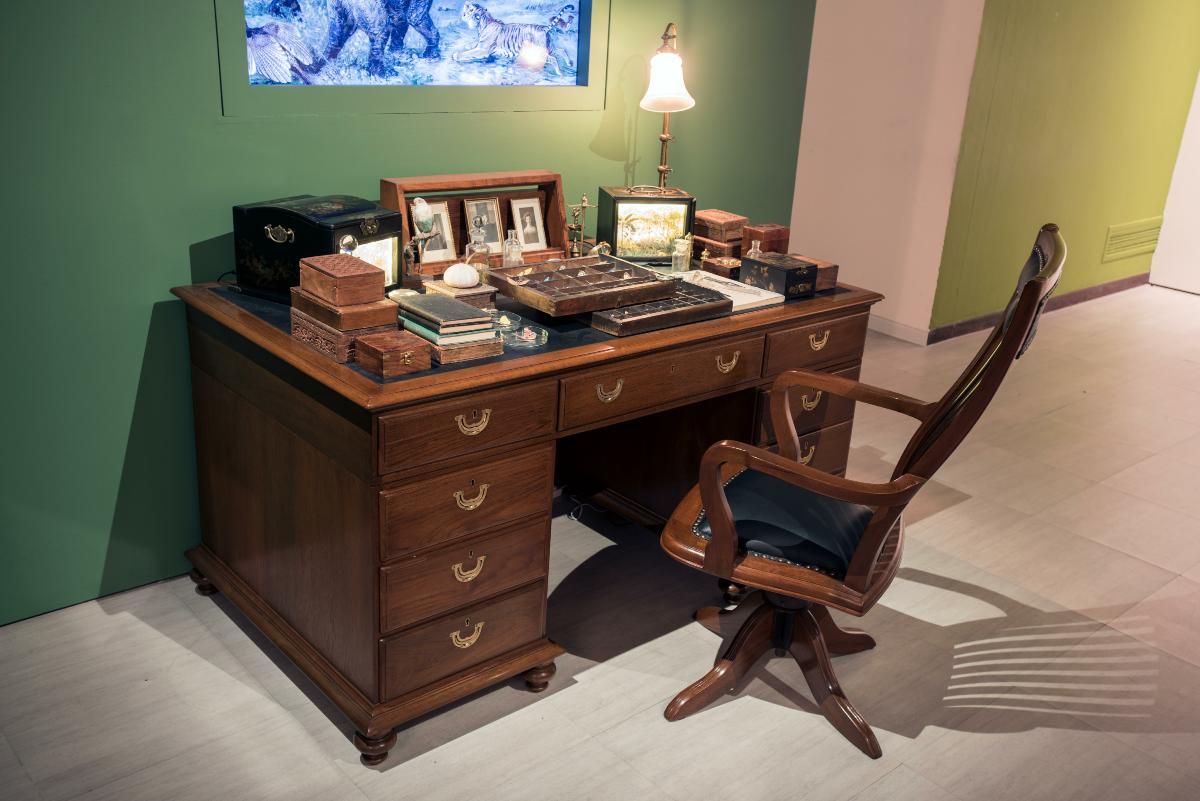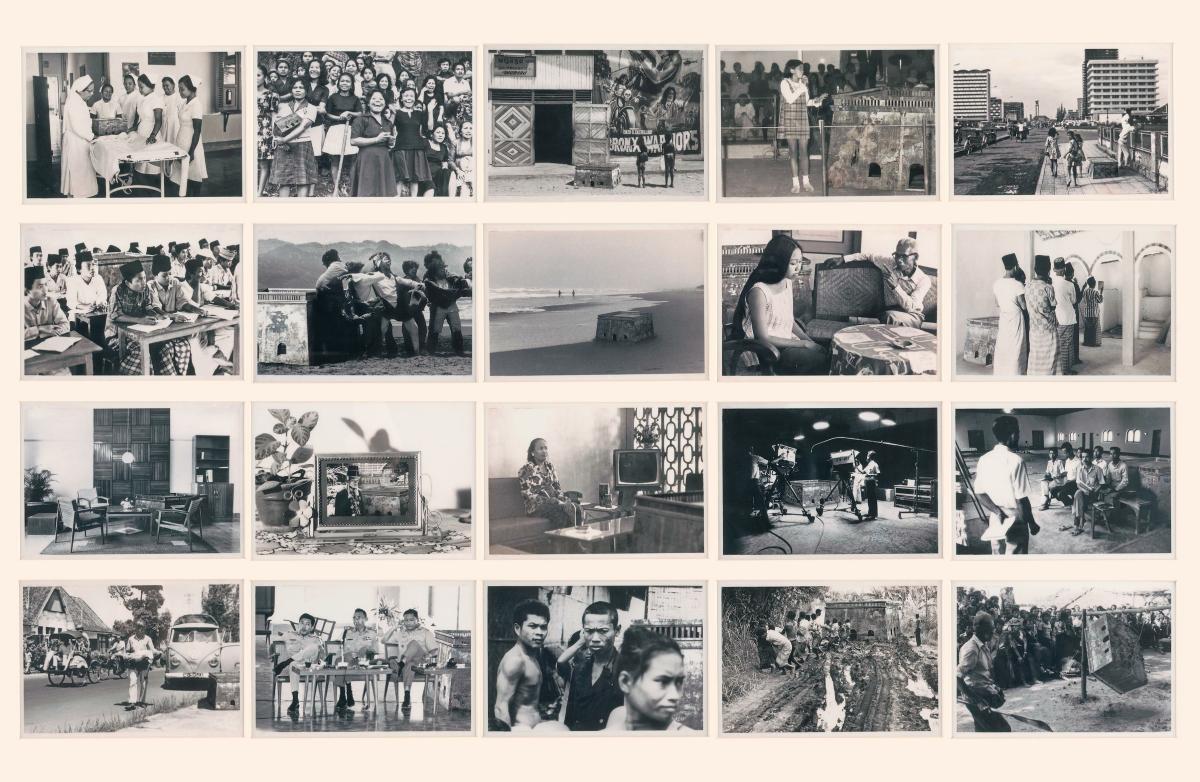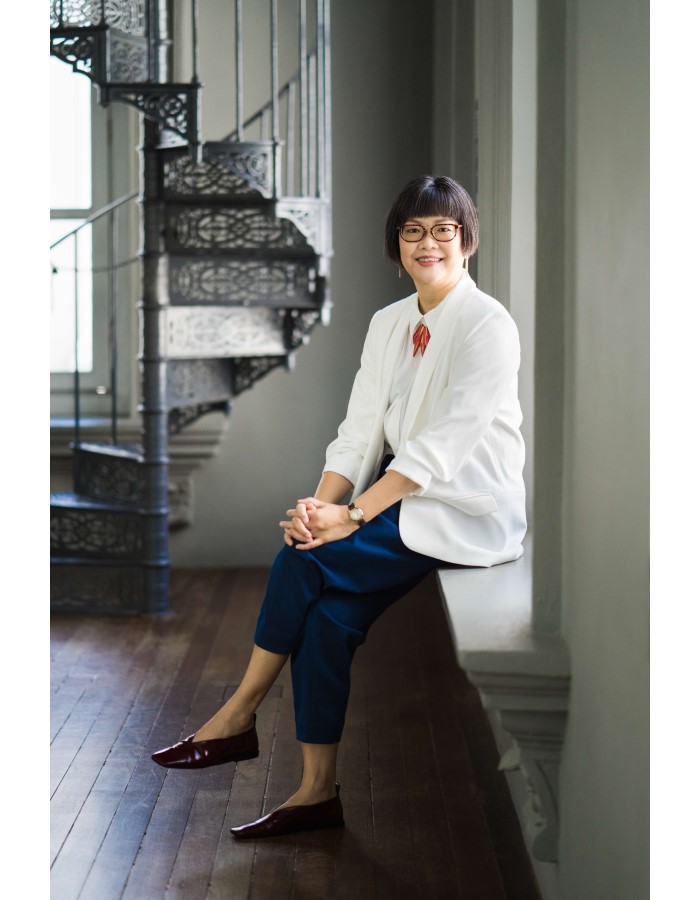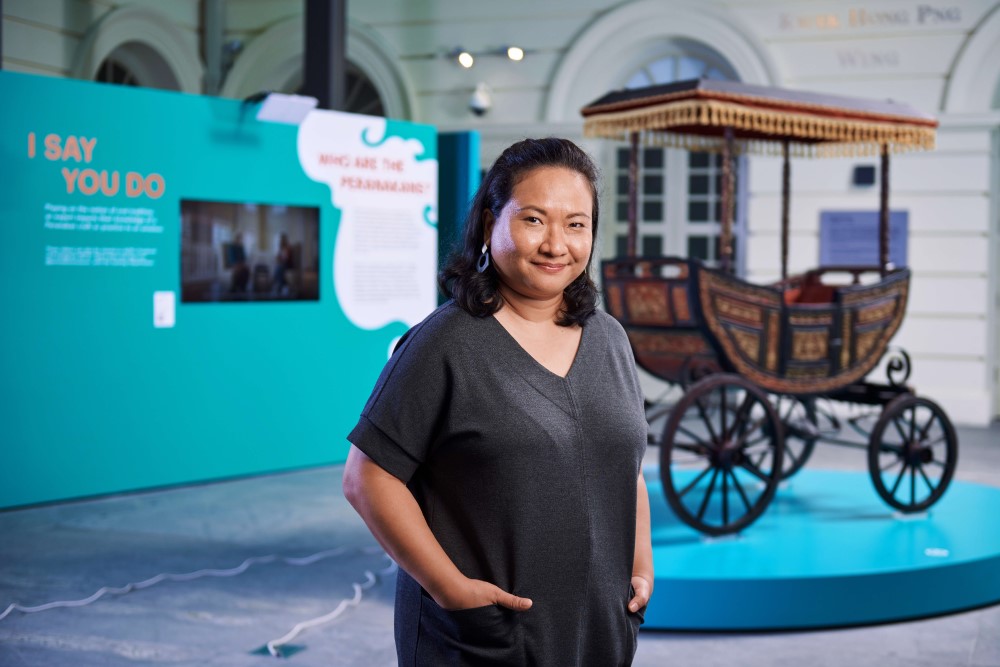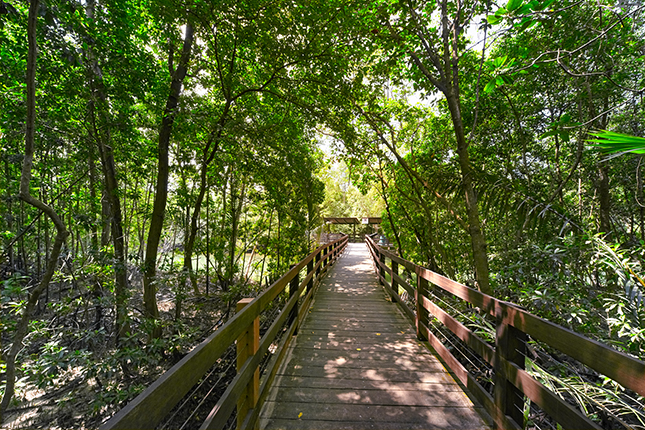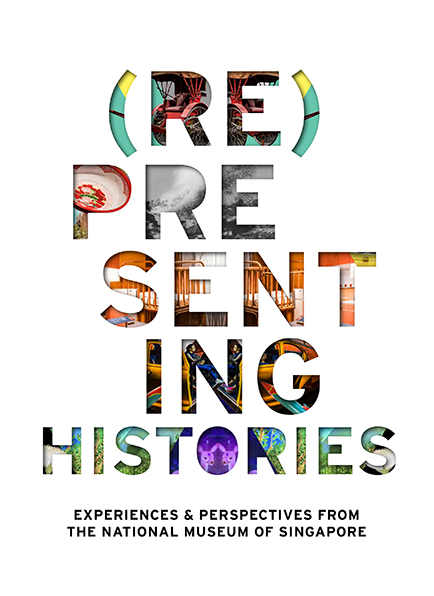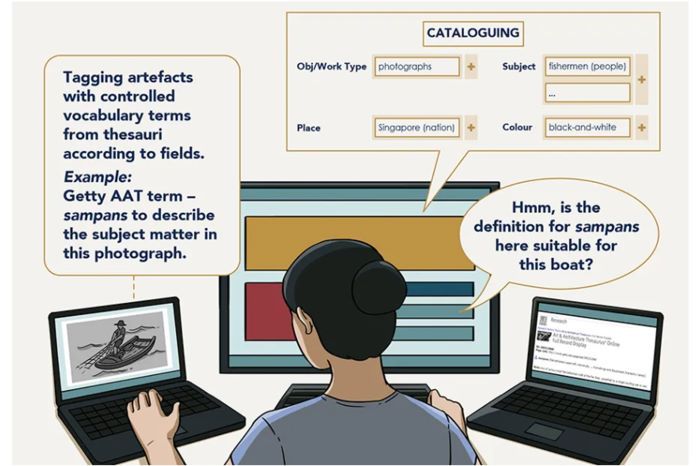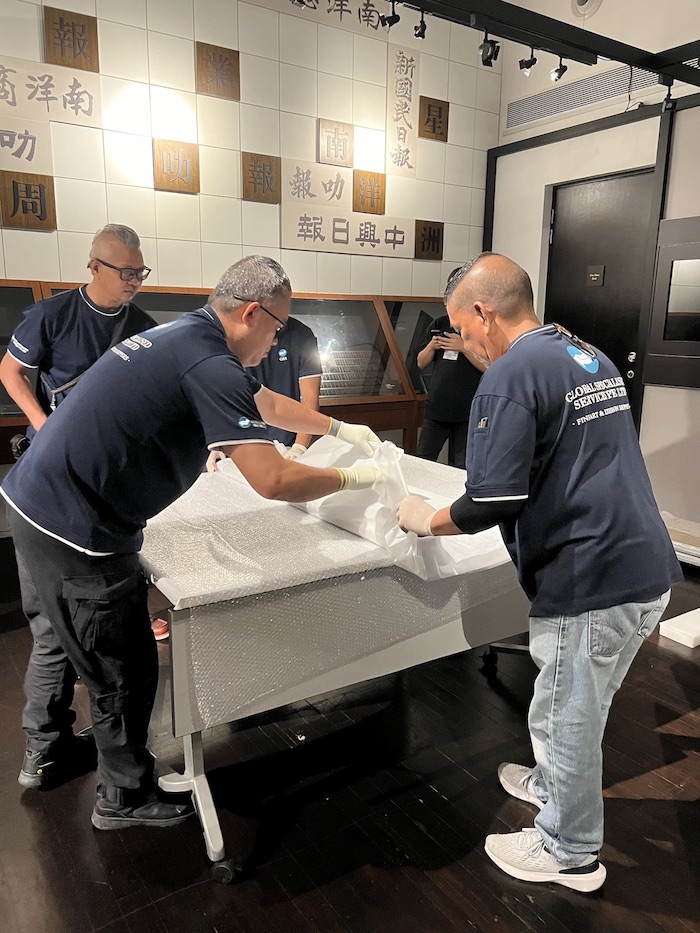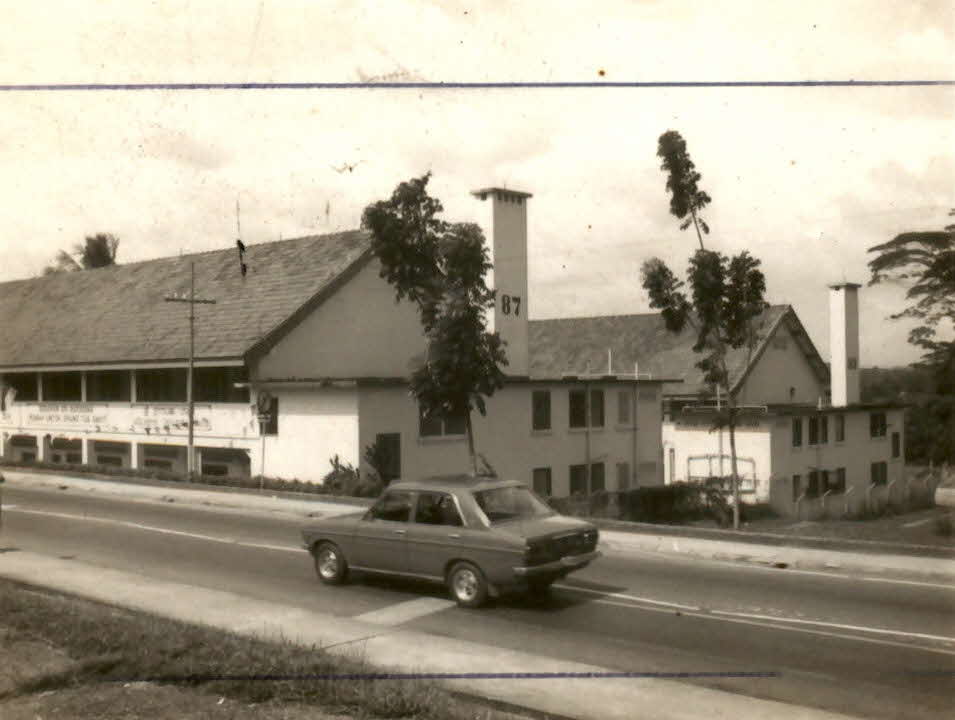Text by Fairuz Iman Ismail
MuseSG Volume 10 Issue 1 – Jun 2017
Story of the Forest is an immersive, larger-than-life digital installation, which initiates multi-faceted dialogues with visitors. The artwork touches on various histories – that of the site it is presented in, as well as the muses it features. The interactive installation bridges conversations between Singapore’s colonial past and its present-day modernity by means of a visual and virtual landscape, which provides an alternative lens through which to examine history.
The installation debuted at the opening of the revamped Glass Rotunda in the National Museum of Singapore (NMS) in December 2016 – the culmination of a project that took two years to create. The first conversation with Kudo Takashi from teamLab about the revamp began back in February 2014, shortly before the closing of Singapore Biennale 2013. Having successfully presented the immersive digital installation, Peace Can Be Realised Even Without Order, which awed visitors at Singapore Biennale 2013, NMS was excited to see how teamLab, a collective of more than 300 creatives, would respond to its latest challenge.

The 2015 NMS Gallery Revamp
The Glass Rotunda was first erected during the museum’s revamp in 2006 as a modern architectural response to its 19th-century neo-Palladian Rotunda, which was built when the institution first opened in 1887. In addition to serving as the main entrance to the Singapore History Gallery (SHG), the Glass Rotunda was also used to host a video projection artwork by Singapore artist, Tan Pin Pin. NMS then underwent an extensive revamp of its permanent galleries in tandem with the nation’s Jubilee celebrations in 2015. The SHG was relaunched in August 2015, and the Glass Rotunda and Gallery 10 were unveiled in December 2016.
NMS had two main objectives when they decided to collaborate with teamLab for the revamp of the Glass Rotunda. They wanted to exemplify the museum’s continuing interest in working with contemporary art and artists, and at the same time initiate relevant conversations about both the past and present.
Brainstorming Artists
teamLab’s preliminary idea was inspired by NMS’s surrounding natural landscape. Taking into consideration the site of the Glass Rotunda, which was framed by the lush greenery of Fort Canning in its background, teamLab sought to depict local flora in the design of the installation. This gave NMS the idea to share the William Farquhar Collection of Natural History Drawings with the Japanese collective. For NMS, it was an opportunity to not only rekindle and regenerate interest in the prestigious collection, but also to reintroduce it to the public.


The 477 illustrations commissioned by Farquhar during his tenure as the British Resident and the Commandant of Melaka from 1803 to 1818 is one of NMS’ most valued collections. The drawings depict the flora and fauna of the region, and were instrumental in the discovery of several important zoological and botanical species. The Chinese artists that Farquhar commissioned utilised Chinese brush painting techniques while attempting to show the perspective and naturalism of Western paintings. This resulted in an enchanting fusion of two different art making approaches.
Transforming Dimensions
From the selection of 477 illustrations, teamLab, in close consultation with curators from NMS, shortlisted 69 drawings to be digitally transformed into three-dimensional form. The collective began extensive research on the selected drawings. teamLab wanted their artists, programmers, sound engineers, CG animators and technologists to understand the characteristics of the selected flora and fauna, before transposing the illustrations into a virtual biosphere.

Apart from the intensive study of the different subject matters from the drawings, teamLab also had to create a virtual landscape to house the three-dimensional inhabitants. In this task, the collective deployed their creativity and imagination to envision what the original artists would have experienced in their task to document these flora and fauna. Although the mediums of execution used by teamLab and the original Chinese painters are vastly different, attention to detail in both cases are extraordinary.
Building Up
Before teamLab could commence installation, they had one major obstacle to overcome. The inner structure of the Glass Rotunda was not conducive to housing the technical equipment that teamLab required for the new installation. teamLabs’ architects, mathematicians and designers therefore had to work with external fabricators and audio visual specialists to specially plan the internal structure of the Glass Rotunda. The proposed structure had to house 17 projectors within the internal assembly and 42 projectors along the spiral passage.
This was the biggest installation that teamLab had ventured into thus far.
Due to the complexity of the construction, teamLab decided to first create a life-size mock up in Kawasaki, Japan to ascertain the necessary equipment required for actual installation on site.

Along with the fabricators and audio visual specialists, teamLab spent a total of three weeks testing the feasibility of the structure and assessing the equipment, before shipping the structure and technical equipment to NMS.

Bringing It Back
Once the structure and technical equipment had arrived in the museum, the team commenced installation work. The team was separated into two groups to oversee two key spaces – the main structure in the Glass Rotunda and the passageway.

The teams underwent weeks of groundwork – troubleshooting software and hardware to ensure that the installation would be smoothly delivered.

In addition, the team working on the 170-metre passageway was also responsible for the development of a mobile application to accompany the installation. This mobile app would add another layer of interactivity to the installation, presenting additional information about the illustrations to visitors.

The Forest
The installation was officially opened on 10 December, 2016 to overwhelming response from visitors. The museum also witnessed a surge in visitorship as a result of this immersive installation. Visitors to Story of the Forest consisted of tourists, families and young audiences, many of whom could be seen studying the installation and comparing it to the original drawings that were located in the Goh Seng Choo Gallery.
As a result of the new installation, NMS discovered that visitorship to the Goh Seng Choo Gallery had also increased. This promising discovery is reassuring as it demonstrates NMS’ success in bridging curiosity and conversation about history through modern approaches and methods.
Visit teamLab’s installation, Story of the Forest at the Glass Rotunda, National Museum of Singapore.





